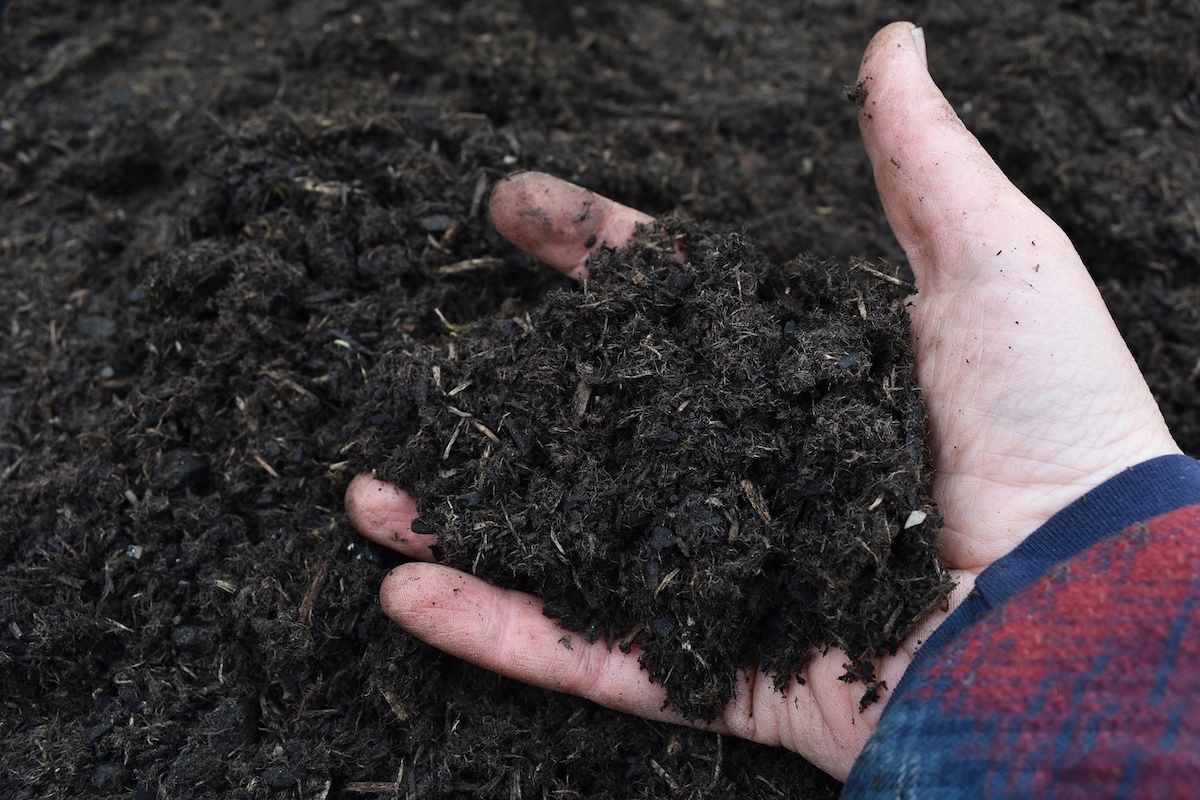Biochar: Its Pluses and Minuses
As an Enhancer to Nature’s Processes, Biochar Can Enrich Soils and Drawdown Carbon

In recent years, biochar has received a lot of attention: some positive, some negative. Biochar is a super-charged charcoal, created when organic matter — wood, grain stalks, grasses, peanut shells, etc. — is burned slowly with almost no oxygen in an enclosed chamber at nearly 1,000 degrees Fahrenheit or higher. The result is a stable crystalline substance rich in carbon that is resistant to decomposition. The pyrolysis (burning) creates small chambers capable of holding moisture, nutrients, and a diversity of microbes.
As a soil regenerator, biochar works best when combined with compost or livestock manure, additions that provide microbes and nutrients. By itself, it is not a fertilizer. Biochar varies greatly depending on the organics or feedstock used. At its best, biochar increases agricultural productivity, improves soil health and resilience, transforms a waste product into a resource, and helps resolve the climate crisis by sequestering carbon. There has also been a lot of promising exploration and development of the use of biochar in industrial applications.
Because of the organic feedstock used in its production, biochar is sometimes considered the successor to biofuels. Such fuels have an uneven history, since sometimes they add to deforestation and greenhouse-gas emissions, and even at times deplete oxygen levels. Biochar raises alkalinity levels when applied to fields, making it critical that soils be tested and analyzed before deciding on its addition.
When it becomes a part of nature’s cycles, biochar can offer many benefits. Ten years ago, an Australian farmer started feeding the substance, mixed with molasses, to his cattle. The biochar was subsequently distributed by the cattle across pastures as manure. Dung beetles quickly buried it underground up to 15 inches in depth. Within three years, scientific tests showed a significant improvement in the soil. Moreover, the work of the beetles took the manure’s nitrogen underground, preventing it from becoming nitrous oxide, a serious contributor to global warming. Another benefit of adding some biochar to cattle feed is a reduction of the methane they emit from digestion and burping. The production of biochar can be costly depending on the feedstock and transportation, but a financial analysis showed a positive return for the system developed by the Australian farmer and the potential for rapid commercialization.
When biochar is incorporated as an additive or component in nature’s processes, its positives can far outweigh its negatives. The organic feedstock needs to be agricultural or forestry waste and not a monoculture product. When the focus is on biological principles and the promotion of life, biochar has much to offer. In agriculture, it requires a shift from chemical fertilizers and pesticides to fostering soils rich in microbes, a move from an antibiotic to a probiotic approach.



